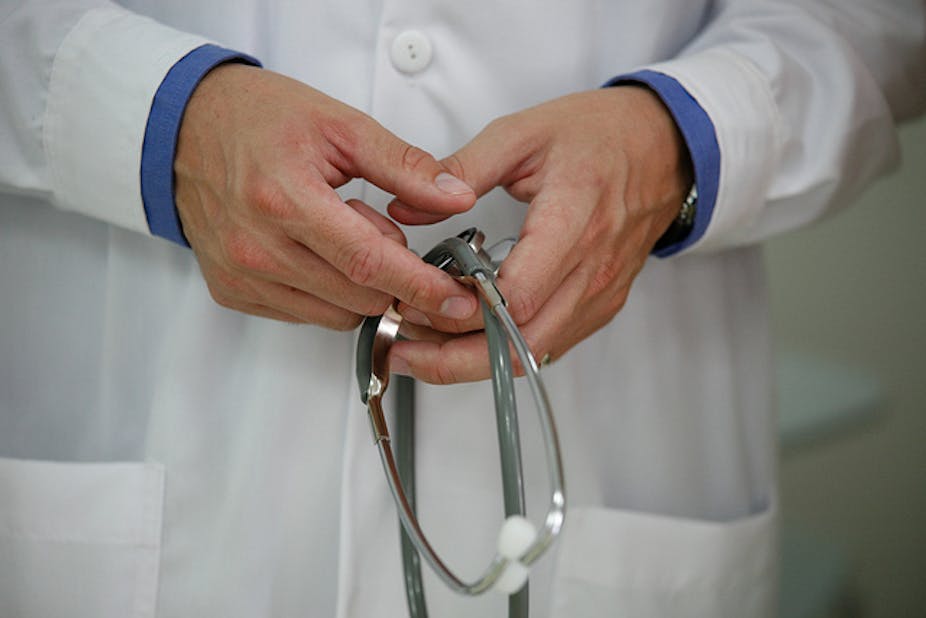“Diabetic urine”, the surgeon Herbert Mayo wrote in 1832, “is almost always of a pale straw or greenish colour. Its smell is commonly faint and peculiar, sometimes resembling sweet whey or milk.”
The use of a culinary metaphor for describing a disease symptom would come as no surprise to Ritu Lakhtakia whose “Twist of taste: gastronomic allusions in medicine”, is published today in the BMJ’s Medical Humanities.
From food metaphors
Lakhtakia draws our attention to the fact that medical educators have often relied upon culinary metaphors to describe the look of particular medical conditions.
“Creamy pus”, she tells us, “is the unwholesome attribute of an inflammatory exudate composed of necrotic tissues, white blood cells and bacteria.” To you and me that means pus with the texture of the stuff we put on strawberries – a striking, if somewhat alarming, metaphor.

She might, however, be surprised that Mayo’s description was far from metaphorical. The taste of diabetic urine, he maintained, was “always decidedly saccharine”. In other words, Mayo had used three of his senses to diagnose diabetes, sight, smell and taste.
That most famous of British surgeons, John Hunter (1726-1793) took the use of taste even further.
“The semen,” he said, “would appear from the smell and the taste, to be a mawkish kind of substance; but when held some time in the mouth, it produces a warmth similar to spices, which lasts some time.”
One assumes, at least, that he was tasting his own.
To sensory medicine
What all this reminds us is how sense-laden the history of medicine is. For millennia, healers, in their encounters with patients, used all their senses most of the time.
Sense use was not restricted to the emblematic activity of the medieval and early modern physician of looking at, smelling, and tasting flasks of urine. It was gazing, touching, palpitating, listening and smelling the patient for the slightest sign of disease.
The history of diagnosis has been the history of doctors’ use of the five senses.

And as time passed, doctors developed ways of enhancing their senses. Most celebrated of all was probably the invention of the stethoscope in 1816 by French physician Rene Laennec (1781-1826) as a means of detecting lung or heart problems through the amplification of the body’s sounds.
But whereas the stethoscope enhanced the doctor’s senses, a battery of machines was developed in the 19th century to replace them. These included the sphygmomanometer (Von Basch 1881), which measured blood pressure and, towards the end of the century, Röntgen rays (X-rays), which became the first means of seeing what was going on inside a living human body.
Technological leaps
One of the most striking technological replacements of the senses was developed by James Mackenzie (1853-1925) while he was still a humble GP in Burnley during the late 19th century.
His clinical experience combined with the use of his senses told him that a young woman whose labour he was attending was safe, despite an audible heart murmur. Her sudden death through a heart attack shocked him.
Clearly the senses were not enough; he decided to dedicate his life to studying heart murmurs. But how?
Murmurs were usually detected through the stethoscope. But they were incredibly hard to classify. No one could work out which were harmless and which fatal.

So Mackenzie created a small portable “clinical polygraph”, which he would clip to the wrist of any patient in whom he had detected a murmur. He collected thousands of printouts from his polygraph, which over the years he correlated with the fate of each patient.
In the process, not only was he able to diagnose a wide variety of cardiac arrhythmias, but he also transformed his career from a humble practitioner treating the poor working classes of Burnley, to a Harley Street specialist with wealthy celebrity patients which included the ornate novelist Henry James.
Towards better diagnoses
Because of the success of enterprising doctors such as Mackenzie, during the 20th century the clinical use of the senses has been further eroded. Now there is a battery of technology dedicated to detecting what the senses cannot.
Ultrasound maps foetal development and detects physical irregularities. CT and MRI scans enable the realistic (and sometimes real-time) visualisation of what is going on in the body.
So while doctors still use their senses, and are trained to do so, it is a brave one who diagnoses a potentially serious condition by the human senses alone.
Lakhtakia shows that the senses remain vitally important to the practice of medicine and medical education. She draws our attention to the look and smell of food, and the analogies that can be drawn between them and disease.
She rightly understands that the process is old and effective, and helps reinforce the ability of practitioners to diagnose. For like all sciences, medicine must not only observe but describe, and in shifting from observation to description, metaphor becomes crucial.
But metaphor will only get you so far. Today, while a medical practitioner might possibly agree with Mayo that a diabetic’s urine smelled like “sweet whey or milk”, she’s unlikely to sip the urine for a sugar-like taste; much easier – and safer – to test for glucose levels in the blood. And more reliable too.

